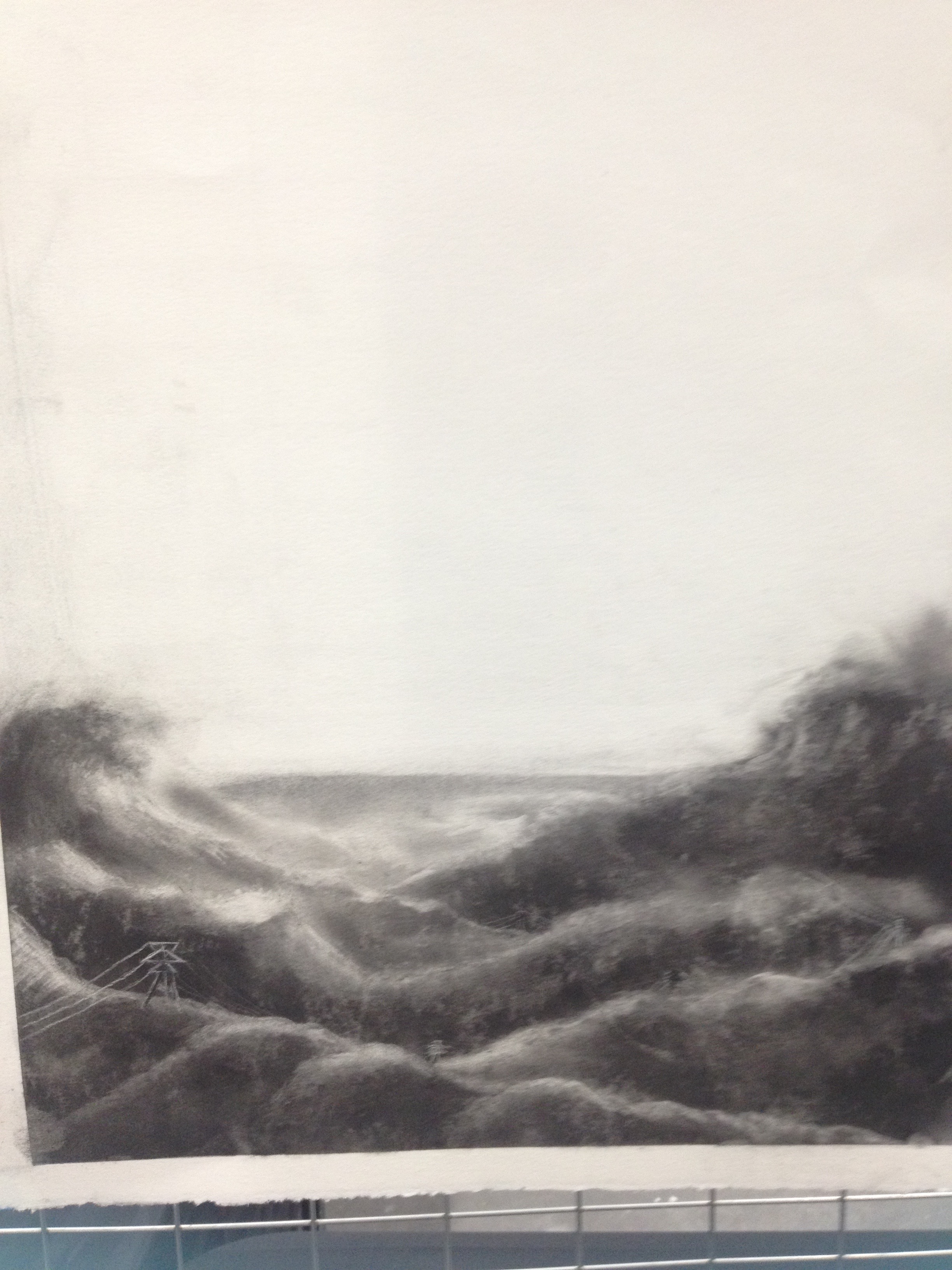A really lovely and deeply contemplative conversation with Jason Chu.
Here are a few “digital reproductions” or photographs taken from my iPhone of his artwork to prelude the recorded conversation.




To stand before the art and bask in its presence, is something else altogether, let me tell you. This reproduction of Jason’s art really doesn’t do it any justice. On a digital platform, it’s now a representation of a representation. Maybe it’s an inadequacy of my phone’s camera that cannot capture the minute detail, or perhaps it is the transference into the digital, where the original artwork’s detail is generalized into pixels, and therefore lost. But without crappy cameras or pixellated images, we wouldn’t be here, would we? There are pros and cons and compromise in everything.
But if you ever are allowed the opportunity to view Jason’s work — or anyone’s for that matter — and if you are able to stand inches away from the surface, see the brushstrokes, each individual line, smudge, or dot of paint, charcoal, or chalk, it really is an honour. Because to see at least a certain extent of the process of the art, is to see a little more into the artist – and that is such an unique experience.
It’s one thing to see and know an artist, but to view the artist through their art, is to see and know them differently, maybe even strangely. Possibly to see and know them more so.
Hopefully, these pictures of these pictures give you at least a small sense of the degree to which Jason views his world: one that is both normal and strange. He subtly yet poetically erases the line between conventional standards/definitions of strange and normal, bringing these two ostensibly binary opposite categories closer. His art comments on the fluidity of our definitions surrounding concepts such as normalcy and otherness, actually inviting us to consider that a thing doesn’t have to fit nicely into either category, but can in fact be BOTH strange AND normal, instead of either or, and instead of clear cut.
The lines created by the brush or the pencil or the charcoal are lines that are not definitive, but porous. This technique replicates in art form, the notion that categories do not have to have definitive lines, but that lines separating categories and definitions are quite permeable.
The most normal things in our world can appear to be the most strange, and the most strangest things in our world, are actually the most normal. Perhaps these two opposite categories are not two distinct and opposite things, but one in the same thing.
We had the privilege to both talk with Jason and view his art. But in a way, the two are no different from one another, but one in the same thing.
Thanks so much Jason!

So then, is reality what we perceive? If art is a visual representation of our own world, and in using media, it mimics what we see with our eyes. But for some people, the most real things in the world, are the things we can’t see. If that’s the case, how do we go about making art for these things: the entities and the aspects in our reality, in our world, that we cannot empirically bear witness to?
Some of the most real, and most influential aspects of our world, are invisible. One human construct that is both very real, influential, and invisible here on earth, are the satellites that float above the earth’s hemisphere. Daily we access our phones, computers, and GPSs, sending information to satellites so far above our head, so far above our perception, almost as if they exist on the outskirts of our reality. But they send us information back, and this info then in turn guides and governs our day to day lives. These things are not accessible to the human eye, but are still massively real and impactful. How can art go about representing an entity such as this?
I like Jason’s comment about how art is like “yoga for the mind”!